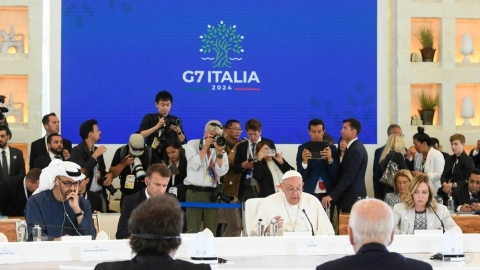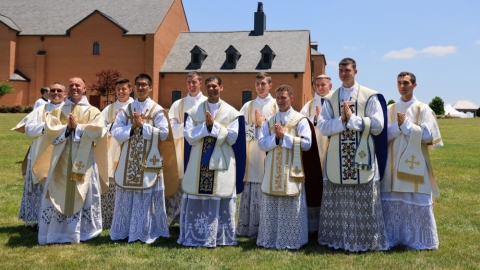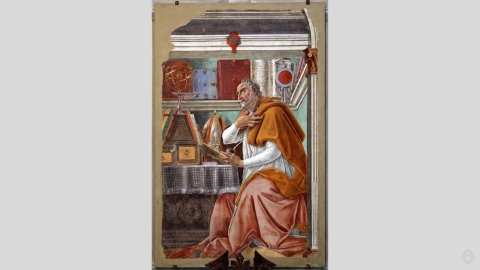Synod on Synodality: The Swiss National Synthesis

On May 13, 2024, the Swiss bishops concluded the national synthesis bringing together the consultations carried out in the parishes and sent it to Rome in order to be used, with the other syntheses, for the development of the Instrumentum laboris for use during the second session of the Synod on Synodality to take place next October.
The document is entitled “Swiss Echo at the 1st Session of the Synodal Assembly of the Universal Church in 2023.”
A first observation: the terms “synodal” or “synodality” appear 107 times text, or approximately a dozen times per page. But this term is not really defined, and the reader has to wonder what it really means. A close reading shows that term “Synodal Church” designates the faithful, at least that is what seems to emerge from the following paragraph:
“The synodal Church and the hierarchical Church are at the service of the mission.… Evangelization links the synodal Church to the hierarchical Church. Like the synodal Church, the hierarchical Church is only a function of the Church as mission.”
The Church is hierarchical by nature, according to the will of her divine founder: it is not a function, it is a constituent element. This separation is revealing. The Swiss bishops text depicts an “anti-Church,” which has lost its four marks: one, holy, catholic, and apostolic.
One
By this term, the Church affirms that she is unique: there is only one Church founded by Jesus Christ. Furthermore, it affirms her unity: of doctrine, sacraments, and government. In the Swiss bishops’ text, unity is lost.
§2.12 states that, “The claim to admit only men to the ordained ministry and the maintenance of a uniform response at the level of the universal Church must be subordinated to the possibility of a synodal Church.” §2.11 stated: it seems “urgent to allow criteria for admission to all the different ministries depending on the region.”
§2.12 continues: “The same applies to certain parts of the doctrinal tradition and discipline of the Church. In the sense of a hierarchy of truths, which can be and must be fulfilled differently according to regions and cultures, in case of doubt, pastoral diversity must be considered as more important… than the uniformity of doctrine and discipline.”
Through such requirements, the Church no longer has unity. Each local Church can modify doctrine, discipline, or liturgy. They are the three elements which constitute this unity.
Catholic
The end of §2.12 concedes that “the synodal exchange between the local Church and the universal Church nevertheless remains important.” But the document emphasizes the independence of the local Church. So, in §1.7.4 it is affirmed that “the criterion of the unity of a synodal Church can only be achieved in a subsidiary manner. Different levels of jurisdiction and responsibility of the local, regional, and universal Church must be defined and made obligatory.”
On the subject of the liturgy, §2.10 states, “control by the universal Church of the forms developed and practiced is therefore not feasible and does not make sense.… In principle, diversity in liturgy must no longer be considered as a threat, but as the richness of a synodal Church alive in its mission.”
Gone is the universality of the Church, her catholicity, since each local Church will evolve independently of the others.
Apostolic
Apostolicity pertains to the founding of the Church by the Apostles and the perpetuation of this mission through the hierarchy, which transmits doctrine and discipline, revealed to the “pillars of the Church,” who have themselves transmitted what they received. But the Swiss synodal Church is singing another tune: it seems that everything can evolve according to circumstances.
The power of bishops – of the hierarchy – is clearly contested in §1.6: “We no longer understand and no longer accept, to a large extent, that it is often only celibate men who are ordained priests or bishops… who decide questions that concern young people, women, queer people… and many others.”
“A process of ‘discernment’ of the people of God must not be thwarted by separate processes of ‘discernment and decision’ of the hierarchy.” And in §1.7.1: “The co-responsibility of the people of God in all processes, from the search for decisions, must be organized in a synodal manner.”
In other words: when the people of God organize themselves synodally and consider problems, seek solutions, then decide on their implementation, there is no question of the bishop coming around to throw a spanner in the works.
Holy
The Church is holy because her divine Founder Jesus Christ is holy, the Holy One of God. She is also holy because charity, which engenders holiness, is the goal of the Church. She wants all her children to be saints. Finally, she is holy by the means entrusted to her by Christ: her doctrine and her hierarchy which confers the sacraments, producers of grace.
What is striking when reading the document is this rigorous flattening of any hierarchical order in the name of respect for “the equality of baptismal dignity” (§1.12). The paragraph also continues: “A conception of ordained ministry and admission criteria which contradict equality of dignity through baptism are seen as undermining a synodal Church.”
Conclusion
It will be curious to see how the editors of the Instrumentum laboris will take the Swiss synthesis into account . With these considerations, there is no longer a Catholic Church. It has become a vague association with a center and delegates in the world, with everyone being able to live his life as he wishes while declaring himself Catholic.
(Sources : Conférence des évêques suisses – FSSPX.Actualités)





